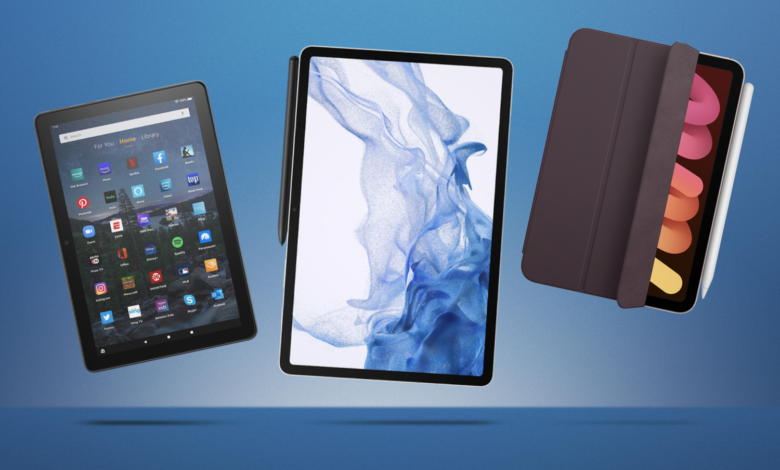Top Tablets of 2025: Find the Perfect One for Your Budget

▼ Summary
– The article presents a buying guide for tablets, highlighting top options for various needs like productivity, entertainment, and professional use.
– The Apple iPad Air (M2) is recommended as the best tablet for most people due to its balance of power, portability, and versatility.
– The Apple iPad Pro (M4) is highlighted for pro users, offering cutting-edge performance and an OLED display, though it is expensive and limited by iPadOS.
– Android alternatives like the Samsung Galaxy Tab S10 Ultra and OnePlus Pad 3 are noted for their high performance and value, with strengths in display and multitasking.
– Key buying considerations include purpose, operating system, display quality, battery life, and additional features like stylus support or cellular connectivity.
Finding the perfect tablet in 2025 means balancing performance, portability, and price to match your specific needs. Whether you’re a creative professional, a student, or someone who enjoys streaming and browsing, today’s tablets offer an impressive range of features that make them more versatile than ever before. From powerhouse devices that handle intensive tasks to budget-friendly options that deliver excellent everyday performance, there’s a model out there for everyone.
For most users, the Apple iPad Air (M2) stands out as the top choice. It combines a lightweight design with the powerful M2 chip, offering exceptional performance for creative work, multitasking, and entertainment. The 10.9-inch Liquid Retina display is vibrant and sharp, while battery life lasts up to 10 hours. Though base storage starts at 64GB, its overall versatility makes it ideal for everyday use.
Professionals seeking top-tier performance should consider the Apple iPad Pro (M4). Its cutting-edge M4 chip and stunning OLED Ultra Retina XDR display provide unmatched speed and visual quality. Despite its slim 5.1mm profile, it handles demanding apps with ease. However, the high price and limitations of iPadOS may give some users pause.
Android enthusiasts will appreciate the Samsung Galaxy Tab S10 Ultra, which features a massive 14.6-inch AMOLED display and robust performance thanks to the MediaTek Dimensity 9300 Plus chip. It includes an S Pen and offers useful AI features, though it faces stiff competition from Apple in creative software support.
A great alternative to Apple’s offerings is the OnePlus Pad 3, which delivers flagship-level performance with a Snapdragon 8 Elite processor and a bright 13.2-inch display. It excels in multitasking and media consumption, and its long battery life is a major plus. While accessories add to the cost, it represents strong value for Android users.
For those who prefer a more compact device, the Apple iPad Mini (6th generation) offers a full iPad experience in a highly portable form. Its 8.3-inch screen is sharp and vibrant, and it supports the Apple Pencil, making it great for note-taking and reading on the go.
Budget-conscious shoppers should look at the OnePlus Pad Lite, which provides a solid build, smooth 90Hz display, and exceptional battery life at an affordable price. It handles everyday tasks well, though it lacks the power of more expensive models.
The Google Pixel Tablet stands out for its dual role as both a tablet and a smart home hub when docked. It runs a optimized version of Android and is ideal for users invested in Google’s ecosystem.
Rounding out the list is the Xiaomi Pad 7 Pro, a lightweight Android tablet with strong performance and an excellent accessory ecosystem. Its 11.2-inch LCD is bright and responsive, making it a compelling option for productivity and entertainment.
When choosing a tablet, consider how you plan to use it. For general use, a mid-range model with at least 4GB RAM and Full HD display will suffice. Professionals should look for higher specs, including powerful processors and ample storage. Operating system preference is also key, iOS offers seamless integration with other Apple devices, while Android provides greater flexibility and customization.
Display quality, battery life, and additional features like stylus or keyboard support should also influence your decision. If you need constant internet access on the go, a cellular model is worth the extra cost; otherwise, Wi-Fi-only tablets are more economical.
While tablets have become increasingly capable, they may not fully replace laptops for heavy-duty tasks like coding or advanced video editing. However, for most everyday activities, a modern tablet paired with the right accessories can serve as a highly effective portable device.
Our recommendations are based on thorough, hands-on testing. We evaluate performance, battery life, display quality, and usability over extended periods to provide reliable and detailed insights. This ensures that you can choose a tablet that truly meets your expectations and fits your lifestyle.
(More on: Stuff.tv)


